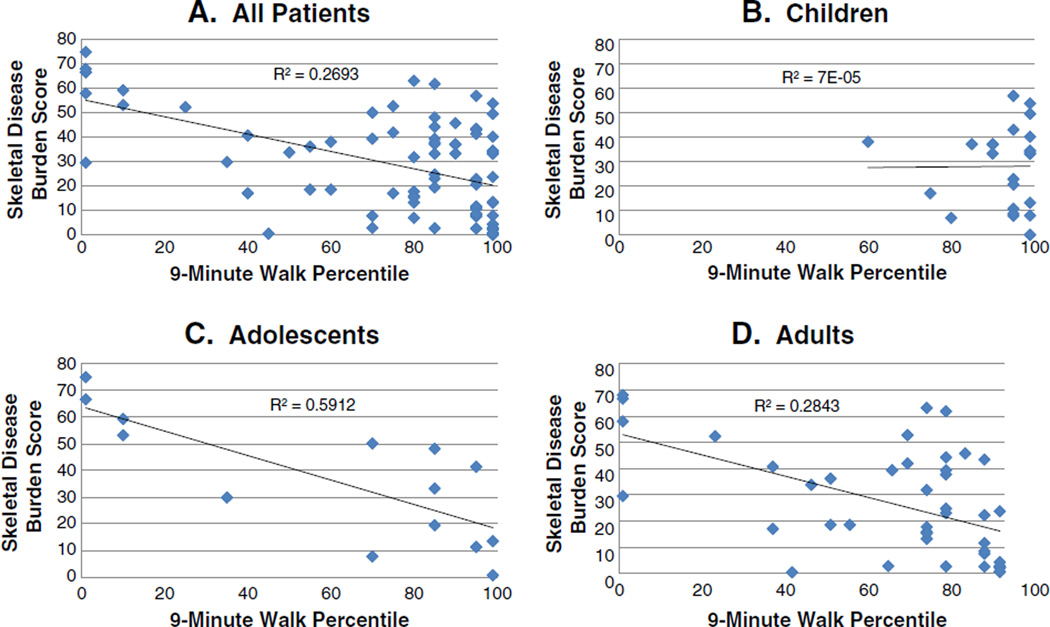Fig. 1.
Regression analyses of the relationship between skeletal disease burden and walking function by age group. Skeletal disease burden was calculated using a standardized, validated tool the measures skeletal disease burden (SDBS, Ref. [38]) and function was assessed by performance on a standardized nine minute walk (9MW, Ref. [35]). The relationship between SDBS and 9MWwas determined by calculating the Pearson correlation coefficient. The R and p values are indicated. The relationship for all patients (A), children younger than 12 (B), adolescents aged 12–17 (C), and for adults (D) are shown. For all groups but the children, there was a significant inverse relationship between skeletal burden and function.

